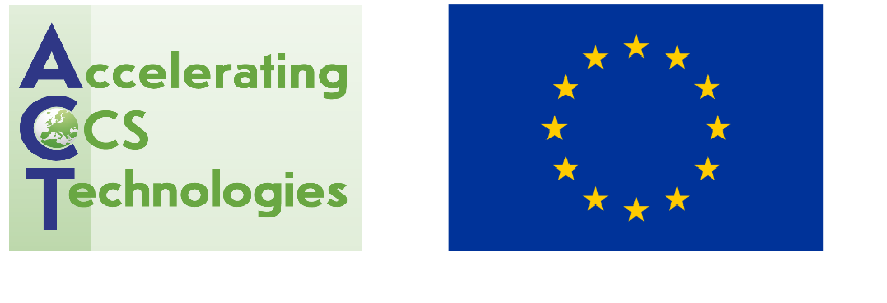ACT- 1st Knowledge sharing workshop, 14 November 2016
/Knowledge Sharing is key to the success of ACT
On the margins of GHGT-13 (the biannually held CCS conference series of the IEAGHG, the IEA’s Greenhouse Gas R&D Technology Collaboration Program), the ERA-NET ACT consortium met in a one-day workshop 14 November 2016 at the Swiss Tech Convention Center in Lausanne (Switzerland) with their US-American Department of Energy, Australian (ANLEC R&D) and Canadian (NRCan) counterparts to discuss and share good practices in devising and managing funding schemes for CCS research and innovation projects.
Read the report here.
The picture shows the speakers.
From left: Aage Stangeland (RCN, NO), Nicoleta Dumitrache(UEFISCDI, RO), John Litynski (DoE, US),
Gunter Siddiqi (DETEC, CH), Gerdi Breembroek (RVO, NL), Annette Weiß (PtJ, DE), Noel Simento (ANLEC, AU),
Brian Allison (BEIS, UK), Ragnhild Rønneberg (RCN, NO), Dick Wells (ANLEC R&D, AU) and Tim Dixon (IEAGHG, UK).
Eddy Chui (CanmetENERGY, Natural Resources Canada) was not present whenat the photo-session.
The workshop gathered together 20 people, some of the potential evaluators of ACT
propsals also participated at this workshop.
The stage was set by IEAGHG who recommended a diligent process to define the funding program’s objective and evaluation criteria, and the high added value derived from large-scale and complex CCS projects. Importantly, when executing large and complex CCS projects, there is a continued need for ongoing underlying applied R&D.
Funding agencies adopt variable approaches to funding CCS research. Underlying is a clear understanding of the research and innovation space and the regional needs to advance CCS. Fit-for-purpose funding vehicles range from governmental research programs to not-for-profit companies. Programming is driven by needs and can range from highly specific to very broad coverage. The duration of funding programs range from annually adjustable to multi-year thematic programs.
Defining calls, evaluation issues and technical readiness
Technical readiness assessments provide a solid foundation to enable well-defined topical calls. If funding programs are driven by a portfolio of demonstration projects, the solicitation and selection process may be highly targeted. The submission and evaluation process can be tailored to individual projects or range up to highly structured two-stage processes. Proposals are not only evaluated on the scientific and technical merit, but also along organizational criteria and organizational capability.
Cooperative/contribution agreements are the norm for projects that are characterized address technology readiness levels TRL of 4 or higher; grants are rarely given. Agreements are subject to close review and assessment of technical, managerial and financial performance, often with go/no go decisions. TRL drives also the level of monitoring. Project reporting typically involves regular updates of progress and expenses incurred, and may extend to an additional 5 years of reporting beyond project end date. Contracts pay special attention to the protection of the independence of researchers. Intellectual property rights are owned by the researcher and licensed to project.
Dissemination and exploitation
Dissemination and exploitation of results requires the consideration of the system’s readiness (framed as a reference performance level) in addition to advances in technology readiness. Exploitable results are of particularly high quality from funded research that has a «line-of-sight» to (competitively developed) technology. Results may also find immediate applications in other fields using similar technologies. Facing the research community, there is also heavy emphasis on disseminating results via the learned literature such as journals, webinars and conferences. Post-project assessments and lessons learned feature strongly; multi-lateral joint activities with other funding organizations range from participation as reviewers to coordinated planning and release of solicitations.
Leassons learned
- A solid understanding of the research and innovation space in Europe helps focus on application-driven research needs by an emerging commercial sector. An ERA-NET ACT–like institution needs to be a highly efficient catalyst for funding opportunities and to match industry needs with research & innovation capabilities.
- All funding schemes emphasize the value of a deep knowledge of the research and innovation space of CCS technologies. Positioning of the funding mechanism will define the level of collaborative/cooperative versus targeted solicitation of the research & innovation community.
- Contracts are multi-faceted and require time to formulate and execute. Reporting is «manifold» and commensurate with TRL’s.
- The provision of a platform (annual reviews) for dissemination is highly effective, also to engage outside-of-Europe stakeholders.


